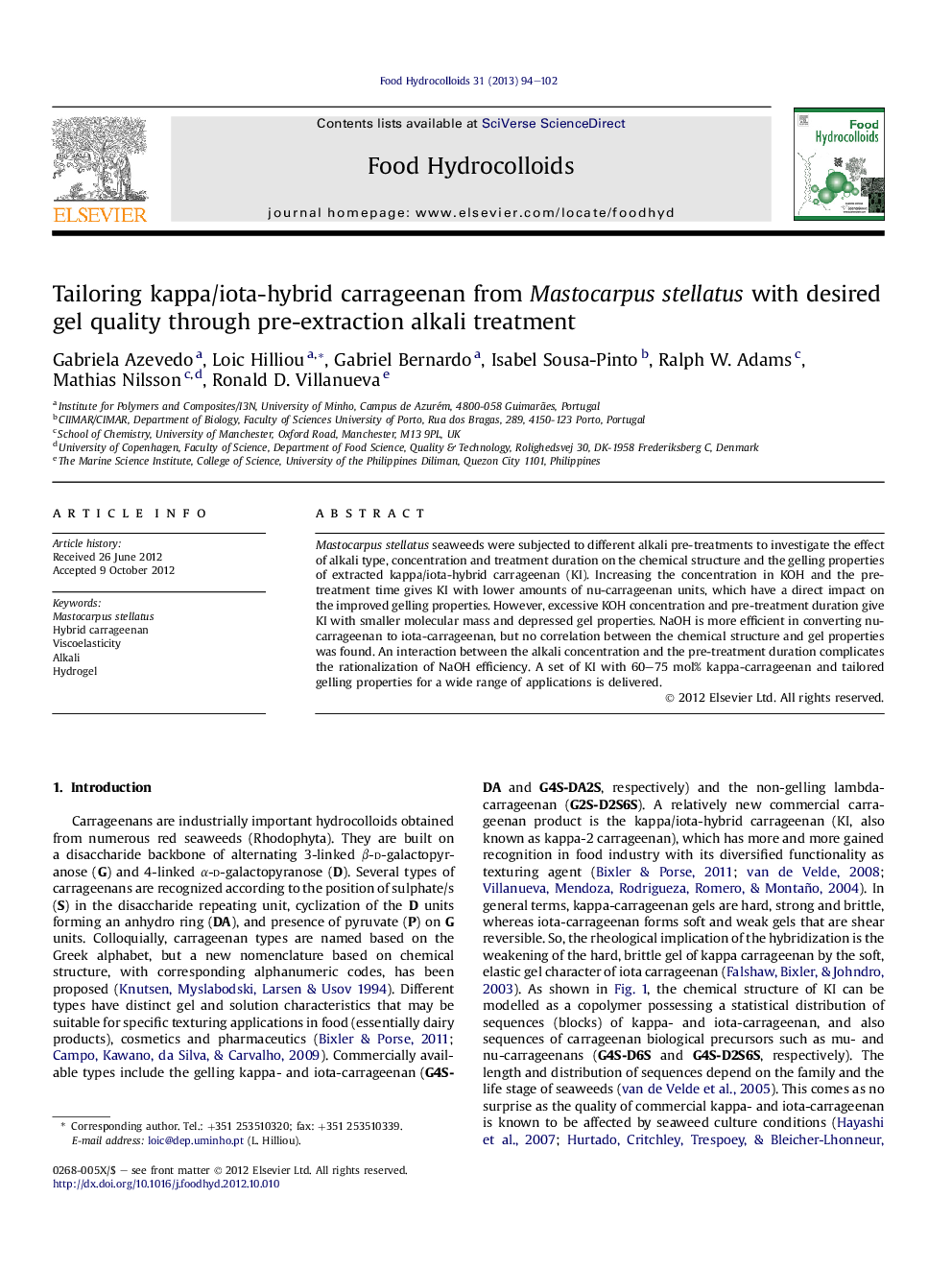| Article ID | Journal | Published Year | Pages | File Type |
|---|---|---|---|---|
| 605554 | Food Hydrocolloids | 2013 | 9 Pages |
Mastocarpus stellatus seaweeds were subjected to different alkali pre-treatments to investigate the effect of alkali type, concentration and treatment duration on the chemical structure and the gelling properties of extracted kappa/iota-hybrid carrageenan (KI). Increasing the concentration in KOH and the pre-treatment time gives KI with lower amounts of nu-carrageenan units, which have a direct impact on the improved gelling properties. However, excessive KOH concentration and pre-treatment duration give KI with smaller molecular mass and depressed gel properties. NaOH is more efficient in converting nu-carrageenan to iota-carrageenan, but no correlation between the chemical structure and gel properties was found. An interaction between the alkali concentration and the pre-treatment duration complicates the rationalization of NaOH efficiency. A set of KI with 60–75 mol% kappa-carrageenan and tailored gelling properties for a wide range of applications is delivered.
Graphical abstractFigure optionsDownload full-size imageDownload as PowerPoint slideHighlights► Kappa/iota-hybrid carrageenans with gel elasticity from 10 Pa to 8 kPa are produced. ► Longer alkali treatment and higher KOH concentration improve gel elasticity. ► The content in nu-carrageenan is negatively correlated with the gel elasticity. ► Less NaOH and shorter alkali treatment give gels with equivalent elasticity. ► Hybrid-carrageenan with 60–75 mol% kappa units and extraction yields of 40–50%.
